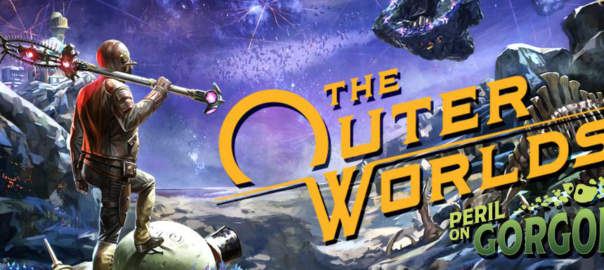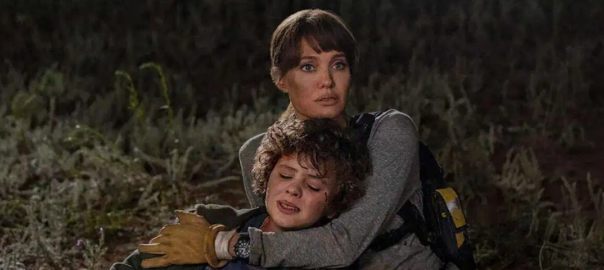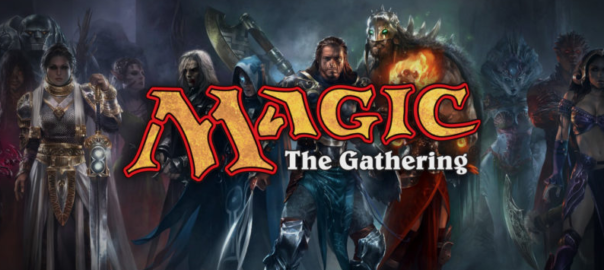[wpedon id=”566″ align=”center”]
Why is it that adventurers often fall into the “murder hobo” archetype? It’s a facet of the kind of game we are playing: in Dungeons and Dragons, it’s a combat-focused game, so the problems that we get presented are primarily combat problems. Computer role-playing games have a large debt to tabletop RPGs and, perhaps especially, to Dungeons and Dragons. It’s not just that games take their inspiration from role-playing, they take their inspiration from combat-focused role-playing. That’s the reason we have games like the first-person RPGs from Bethesda and now from Obsidian. But there is a big problem here.
The problem is in the “role-playing” aspect. Specifically, it’s in the kind of moral choices we’re expected to make in these games. I’ve just finished my second play-through of Obsidian’s The Outer Worlds. I did enjoy the game but one of the reasons I could enjoy it was that I did not let myself view the moral choices presented as real. This wasn’t how I went into the game, though. I got very frustrated at the morality of the game immediately, and it was from there that I decided the entire structure was the issue. I’ve picked at this problem from the moment it started to needle me and I think that I can finally elaborate on the issue with this type of storytelling.
So here’s the incident that pissed me off: Parvati and Edgewater. In my first playthrough, I was running a more standard hero who picks the good boy options 9 times out of 10. However, you get presented with a choice here: you have to reroute power either to the town (with an oppressive work system) or to the deserters (who escaped from the town). The one you don’t send power to will fail as a community. From what people said, especially Parvati, it seemed like the deserters were doing a decent job. My idea was to divert power to the deserters, then the people of Edgewater would become a community with the deserters. Okay, cool. We go through the dungeon and I’m about to do The Thing that diverts power, then suddenly Parvati’s like “wait a second no actually don’t power off Edgewater”.
First of all, what the fuck? Parvati is pretty solidly pro-deserter all the way up until this point. Never mentions a problem. But okay, fine, she has her say, I send power to the deserters. I go back to Edgewater to get a quest thing and the mayor is like “look, fuck you, I have my guys down there and they’re gonna shoot you if you get the quest thing”. So I’m like well I have to get the quest thing, so fuck you, dude, and I shot him. Parvati is horrified and nearly leaves the party. But I’m just like eh fuck that, so I reloaded the save. I don’t shoot the mayor this time. Instead, I just go down and gun down all his goons. Parvati doesn’t blink an eye.
And it’s at that point that I realized the game just isn’t set up to deal with morality in the way it wants to.
Thinking more about it, though, I realized it’s not a problem with Obsidian or the Bethesda style in particular. It’s actually a problem with how we construct adventures. It’s a problem that’s shared by Dungeons & Dragons as well and, in general, with all adventuring games that try to deal with morality in the usual ham-fisted way.
The basic issue is that it’s just not the player’s fault for being in these shitty situations. When building the adventure, game makers & dungeon masters tend not to take any responsibility for the situation. In the Edgewater situation, I can’t say “okay well I don’t want to power either of you off, can you like call your people and we can get a quest thing ordered, I’ll wait”. More importantly to me, I can’t tell the mayor “why don’t you guys go join the deserters?” (it turns out that the “good deserters” are also basically fascists, which I won’t get into in this time, but suffice to say this is not at all apparent before the climax unless you ask a ton of questions). The game constructed both the situation and the viable options. I can’t interact with the quest in any way other than what I’m given. Yet when a character says “I am going to kill you” and I kill them instead, Parvati is horrified about it and I’m supposed to feel bad?
If Parvati was going to be horrified, why doesn’t she shed a tear about the people down there who are going to be killed? Why doesn’t she try to stop the mayor, or to convince me to go another way? It’s because of the entirely artificial reason that she’s just there to accompany you on the adventure. You’re not supposed to kill the mayor, therefore she reacts badly to it. You’re supposed to kill the new guards, so she gives zero fucks.
Basically, the game pretends it has an all-encompassing morality but does not allow me a full latitude in reacting to situations, then judges me based on the constrained decisions I make. It tells me that I can either be a capital-G Good capital-P Person or an evil villain, an outcome that relies entirely on who I decide to murder. (They lampshade this in the Halcyon Helen DLC but lampshading doesn’t make a problem go away.) It’s utterly ridiculous and, to me, the only honest response is to simply not engage with the game’s nods at morality.
But I am trying to get at a larger point. One way to solve this would be to expand the non-combat portions of the game, allow the player to fully engage with the world and think of different solutions. If you wanted to do this, though, you probably shouldn’t play Dungeons & Dragons; there are plenty of other RPG systems which are better equipped to handle the kind of looseness you’d need for this. Some computer games have approached this as well; I haven’t played Vampire the Bloodline: Masquerade but everything I hear about it makes me think that it’s more social than combat focused.
Again, though, I’m not suggesting all games need to broaden out. I’m suggesting that games need to choose. If you are going to ask me to pick any sort of morality I want, you have to allow me to back that up. That means, necessarily, you can’t construct dungeons as the main obstacles. If you’re going to make a combat-focused game, you as the game maker or DM should constrain the narrative so that the players aren’t being expected or even allowed to be paragons of virtue or sons of Sam. Don’t present situations that end up in this kind of schizoid where players shift between being dead-eyed spree killers and goody-two-shoeses, especially not if everyone around them is somehow fine with this.
The clearest example that I have for this idea is actually not social interactions, though. It’s stealth. This particular problem is more apparent in single-player computer RPGs, mostly because party interaction is a minimal part of the active gameplay; in other words, you’re not there with your friends who are reacting to you, at best you’ll have NPCs/bots.
Stealth is an issue for these kinds of games because what they involve is, in essence, not playing the game. In the Outer Worlds, every dungeon is set up as a shooting battle, in other words a combat problem. Whenever you take the stealth “option”, though, you essentially decide to not play that, which leaves you with very little. When you’re in a fight, you are employing spatial awareness, pattern recognition, hand-eye coordination, reflexes, and so on. The problem is engaging and exciting and tense. When you’re using stealth, you’re waiting, watching, shuffling around until you finally reach the end and then if you have put enough points in the proper stealth skill, you can just end the entire encounter at once.
Solving the problem with stealth is never as satisfying as powering through with guns in these games. This isn’t because stealth is inherently uninteresting but because the game is not built around stealth. To a large extent, stealth is more about skill checks than strategy, which means there’s little creative thinking you need to do. All you have to do is be able to press the button at the end.
When I shifted from Normal to Hard on the Outer Worlds, there was a point where I was utterly baffled by how tough the combat got. Eventually I learned that the stand-up shoot-from-the-hip style just wasn’t going to cut it. I started to run away more and take pot shots, have less pride and more efficacy, and it presented an interesting challenge. Stealth, on the other hand, mainly tries your patience. There’s little active challenge in it. The goal is usually to find a fairly obvious secret passage and follow that. If you have your Lockpick and Hack skills high, plenty of the challenges just won’t exist.
Great example from the run I just finished. This is a minor spoiler, I suppose, but once you get there you’ll be able to figure this out immediately. When you get up to the final boss, there’s a locked room next to you with a high difficulty. Now, if you just go through and fight, it’s a fairly tough fight because the boss can wipe your party out pretty easy, there’s a bunch of assholes flying around and running interference, and so on. I think it took me five or so tries to beat. However, if you have a high enough Lockpick, you can get through that door I mentioned without going in to face the boss; then, if you have a high enough Hack, you can just sit back and watch the boss be destroyed.
A big, dangerous, somewhat interesting fight or two skill checks under zero pressure. That’s what I mean by “not playing the game”.
Social stuff is almost worse in these games. With stealth you do have the slight tension of watching the notice icons on people you’re trying to sneak past. Social stuff requires absolutely no though, just skill checks. You never have to do things like dress appropriately, say the right things, present gifts, or so on; just have a high level in an appropriate skill and you can say whatever you want, you’ll get through. If you decide that you don’t want to slaughter a group of people and instead talk them down, congratulations: you’re playing even less of the game than if you tried to sneak past.
Every time I got the opportunity to talk somebody down from fighting I did it, but I immediately felt like I was just choosing not to go on a ride at a theme park. I could just fail the check and have the shooty time that the game is clearly built around, or I could pass and not play this part of the game. It’s a fairly ridiculous choice to ask the player who bought the game to make, but the game acts as though this choice is one that’s meaningful in the moment. It’s like buying NBA 2k21 and it gives up a warning: “If you play this game, you’re asserting that you love Mark Cuban and you want to kiss him, but you can pick audience mode too and then it means you don’t love him”. That’s idiotic, I bought NBA 2k21 to play the game, now you’re telling me the only good boy choice is to not play? That’s a choice made outside the game.
Now, I do want to give a few hold-ups here. I’m not saying that stealth games or social games are not good or not fun. I’m saying that D&D and computer RPGs are mostly not made as stealth or social games, they are made as combat games. I’m also not saying that games can’t critique the kind of experiences we’re engaging in when we play a shooty or a fighty. Critique is an important part of artistic expression and you can do that without act as though the player is at the root
My point is two-fold. First, if you’re going to treat me as though I have total moral agency and could be a shining holy man or a dirty dirty dawg depending on my decisions alone, you have to allow me to interact with situations more fully. If you allow me to do that, you need to make those parts of the game actually interesting. This means a game with either a huge scope or uniformly pretty simplified mechanics, and I understand that. It actually leads into my second point.
This second point is that if you are going to present a combat-focused game, you should structure the storyline around that specifically, rather than pretending as though the whole spectrum of moral agency is open to the player. In TOW, for instance, you could have been locked in as a criminal or a military person, someone who would be expected to “get their hands dirty”. As you work for Phineas, you should either have to keep that quiet or have people judging you for working with a terrorist. People shouldn’t receive you like a savior (the way they do in game), they should treat you like a dispensable butcher (the way combat forces often are by their employers). The idea that you could be seen by Edgewater as a savior & good person after turning off their power and killing a bunch of people is ludicrous. Should you be forced to make that choice? Sure. Should people react to you as if you could have been pure? Absolutely not.
If Parvati would be horrified about Reed, she should be horrified on at least 70% of the missions. The game isn’t equipped to handle this kind of moral agency. The game realizes this, that’s why Parvati doesn’t follow through on our morality. Instead of trying to hammer these big questions into a very narrow frame, lean into what the frame gives you and ask the questions that arise out of that.
Not every game has to present us with the possibility of being the best or the worst. Sometimes, we can just ask tough questions and give tough answers in a tough world as tough-minded people.
[wpedon id=”566″ align=”center”]



